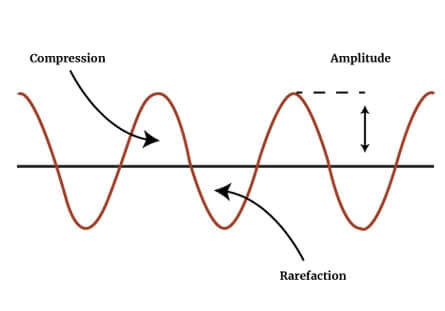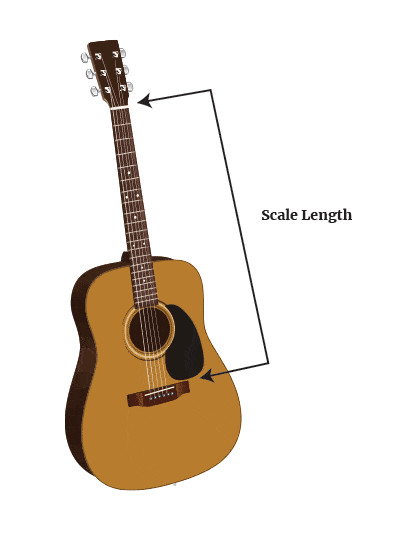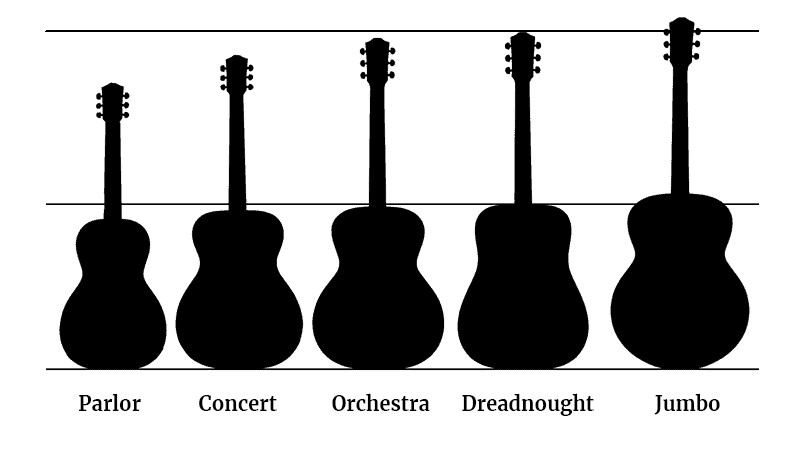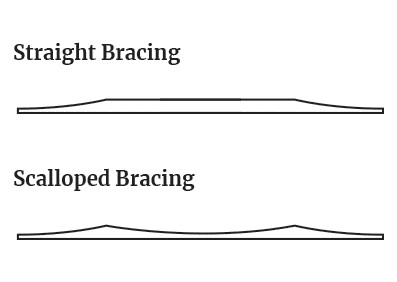Ever wondered how an acoustic guitar works its magic? How does it create those beautiful sounds without any electricity? Let’s dive into the fascinating world of acoustic guitars on guitarplayers.net and unravel the science behind their enchanting music.
Acoustic guitar sound production relies on the vibration of strings, which transfers energy to the soundboard via the bridge. This soundboard vibration amplifies the sound, which resonates within the guitar’s body and is projected through the soundhole. The guitar’s design and materials influence its tone and volume.
Ready to explore further? This detailed guide explains how acoustic guitars work, what makes each one unique, and how to get the most out of your instrument. Whether you’re a beginner, an experienced musician, or just a curious music lover, guitarplayers.net is here to help you understand the intricate workings of this beloved instrument. Let’s unlock the secrets of acoustic sound and explore related topics like guitar maintenance, tonal characteristics, and the best playing techniques.
1. Understanding Sound Perception
 Diagram illustrating how we perceive sound
Diagram illustrating how we perceive sound
To fully grasp how an acoustic guitar creates sound, it’s important to understand how our ears perceive sound. Both processes are deeply rooted in the principle of resonance.
What is Resonance?
Resonance occurs when an object vibrates at its natural frequency in response to another object vibrating at the same frequency. It’s why certain sounds “resonate” with us, evoking strong feelings or memories.
According to research from the Berklee College of Music, understanding resonance is crucial for musicians as it allows for better control over tone and sustain (Berklee College of Music, July 2025).
A classic example is an opera singer shattering glass with their voice. This isn’t just about volume; it’s about matching the resonant frequency of the glass. When the singer hits that specific frequency, the air molecules around the glass vibrate intensely. If the singer projects with enough power, these vibrations can become so forceful that they cause the glass to break.
What are Sound Waves?
When a guitar string vibrates, it disturbs the air molecules around it, creating areas of compression and rarefaction. This disturbance travels through the air as a sound wave.
 Sound Wave
Sound Wave
These sound waves reach our ears and cause the eardrum to vibrate. These vibrations are amplified as they travel through the ear canal. The vibrations then resonate with the tiny bones in the middle ear (ossicles), which transfer them to the inner ear.
Inside the cochlea, a spiral-shaped bone in the inner ear, fluid vibrates, causing tiny hairs to move. These hairs convert the mechanical energy of the vibrations into an electrical signal, which is then sent to the brain via the auditory nerve and interpreted as sound. The ear detects vibrations, converts them into electrical signals, and the brain interprets these signals as sound.
2. How an Acoustic Guitar Produces Sound
Building on our understanding of resonance, let’s explore how the acoustic guitar turns string vibrations into music. The process begins with the strings and is shaped by the guitar’s components.
An acoustic guitar has two main parts: the neck and the body. At the end of the neck is the nut, usually made of plastic, bone, or graphite. The saddle, often made of white plastic or bone, is embedded in the bridge on the guitar’s body.
 Diagram of guitar scale length
Diagram of guitar scale length
The strings are suspended between the nut and the saddle, defining the scale length. When a string is plucked, it vibrates along this length. The vibration is critical for producing sound.
Strings themselves don’t move much air because of their small surface area. That’s why an unplugged electric guitar is much quieter than an acoustic.
The saddle is set into the bridge, which is attached to the soundboard—the top of the guitar. The soundboard acts like a drum skin over the hollow body, supported by the back and sides.
Because the soundboard has a large surface area, it can move more air than the strings alone.
3. Guitar Resonance: Amplifying the Sound
 Resonance Illustration
Resonance Illustration
The energy transfer from the strings to the soundboard might seem unequal, with the strings’ energy unable to move the soundboard effectively.
However, there is a trade-off: sustain. Sustain refers to how long a note lasts before fading away.
Acoustic guitars balance volume and sustain. If the strings were stretched over something totally stiff like stone, they would vibrate longer because the stone would absorb less energy.
But the guitar’s soundboard is flexible, so the strings lose energy faster. This energy vibrates more air molecules for a louder sound, which is a good trade-off.
This idea is important when picking materials for the nut and saddle. Plastic nuts and saddles (common on cheaper guitars) absorb more energy. Denser materials like bone or graphite absorb less, transferring more energy to the soundboard.
As for the soundhole, it releases the air compressed by the vibrating soundboard, creating sound projection. The internal chamber of the guitar body contains air. When the soundboard vibrates, this air is compressed and released through the soundhole. This lowers the internal air pressure, drawing in more air and repeating the cycle.
4. What Makes Acoustic Guitars Sound Different?
 Guitar Body Shapes and Sizes
Guitar Body Shapes and Sizes
Many factors contribute to an acoustic guitar’s unique sound, including tone, volume, projection, and response. These include:
- Body shape and size
- Materials (tonewoods, nut, and saddle)
- Bridge placement
- Bracing pattern and materials
- Luthier’s construction methods (joints, adhesives)
- Finish products and thickness
- Type and gauge of strings
- Pick type (if used)
Guitarist’s technique and the room’s acoustics also matter. These elements work together in complex ways.
Body Size Impact on Sound
Acoustic guitar bodies are shaped like a figure eight, including a top, back, and sides, and an upper bout, lower bout, and waist.
 Acoustic Guitar Dimensions
Acoustic Guitar Dimensions
The internal volume defined by the depth of the sides, the width of the waist, the surface area of the back and sides, and the width of both the upper and lower bout all shape the frequency response (the range of frequencies an object can produce) of the guitar along with volume and projection e.g. the penetrating nature of the sound produced.
Larger guitars, like jumbos and dreadnoughts, are louder because they have more internal space and therefore more air particles are affected when the soundboard vibrates. Smaller guitars, like parlor guitars, are quieter.
Body Shape and Tone
Body shape affects how vibrations move through the guitar, influencing the tone along with the materials used.
A dreadnought has a wider waist and square shoulders, which emphasizes bass frequencies, creating its signature booming sound. In contrast, a jumbo guitar has a balanced sound because of its tighter waist.
A smaller parlor guitar with a wide waist relative to the lower bout emphasizes mid-range frequencies. This can sound boxy, with focused mids and less bass and treble.
A concert guitar, with its tight waist and shallow body, produces a more balanced tone with emphasis on the mid and upper ranges.
The position of the waist is also crucial. A higher waist increases the size of the lower bout, further enhancing the bass response. This makes the dreadnought great for strumming and playing with other instruments, while the concert guitar is better suited for fingerstyle playing.
Comfort-wise, concert guitars are easier to play seated than larger dreadnoughts.
Bracing Pattern
The bracing pattern is the arrangement of tapered wooden struts glued to the inside of the soundboard and back of the guitar.
Bracing stiffens the soundboard, and its pattern and materials significantly affect sound projection, volume, and responsiveness.
Bracing must balance the need to withstand string tension while keeping the top thin and light enough to vibrate freely. There are many bracing patterns, with these being the most common:
Fan Bracing
The classic guitar body shape and size are based on fan bracing, invented by Spanish Luthier Antonio Torres Jurado.
Fan bracing involves gluing 5–7 struts in a fan shape to the soundboard, pointing towards the 12th fret. This design stiffened the soundboard, allowing guitars to be larger and louder, enabling them to play alongside instruments like the banjo and violin.
X-Bracing
Christian Frederick Martin (C.F. Martin Guitars) invented X-bracing in the 1840s, which was initially for catgut strings and eventually led to steel-string guitars with greater volume and projection.
X-bracing uses two cross braces that intersect between the soundhole and the bridge, forming an X shape extending to the upper and lower bouts. A transverse top brace is added across the upper bout, with smaller struts stabilizing the soundhole.
Sidebar struts connect to the X-brace, extending to the soundboard edges, and two angled struts called tone bars are added across the lower bout behind the bridge plate.
Ladder Bracing
Most guitar backs use ladder bracing. It was once common for soundboards but is now mainly used on the back due to its cost-effectiveness.
As the name suggests, struts are arranged in a ladder pattern to distribute force evenly across the back of the guitar.
Scalloped Bracing
Scalloped bracing involves scooping out the middle of the tapered struts and tone bars, reducing their weight and increasing the guitar’s energy and responsiveness.
 Illustration of scalloped bracing versus straight bracing
Illustration of scalloped bracing versus straight bracing
The struts taper towards the edges, so scalloping creates a wave-like shape.
This gives the soundboard more flexibility and response to string vibrations near the center and bridge. More energy from the strings is transferred to the soundboard, producing more complex overtones. This is what gives Martin guitars their rich, distinctive sound.
All standard series Martin Guitars (except the D-28 and D-35) feature scalloped bracing.
Tonewoods
Different woods have different acoustic qualities because of their hardness, density, strength, and flexibility.
While the back and sides matter, the solid wood used for the soundboard has the most impact on the guitar’s sound.
The wood used for the soundboard is chosen for its weight, strength, and flexibility. Ideally, it should respond strongly to string vibrations while remaining structurally sound.
Higher-quality guitars use solid wood, while less expensive models use laminate. Laminate doesn’t vibrate as well as solid wood but handles humidity better and lowers production costs.
Sitka spruce is a common soundboard wood. It’s light and strong, producing a bright, balanced tone with a snappy attack.
 Mahogany tonewood
Mahogany tonewood
Other common top woods are cedar and mahogany. Mahogany offers a warm, balanced sound with a strong fundamental, while cedar provides a wider frequency response and fuller sound.
Denser woods like rosewood and maple absorb less energy and are more responsive than lighter woods like mahogany, so they are usually used for the sides.
Maple, being denser, is often used for the neck, while mahogany is another popular option.
5. Understanding Acoustic-Electric Guitars
An acoustic-electric guitar is an acoustic guitar with pickups that allow it to be amplified electronically, with volume and tone controls similar to an electric guitar.
The most common pickups are magnetic pickups (soundhole pickups), piezo pickups that detect pressure changes at the bridge, and small internal microphone pickups, or a combination.
Magnetic soundhole pickups work like electric guitar pickups. The pickup, which spans the soundhole, creates a magnetic field with magnetic pole pieces wrapped in conductive copper.
When a steel string, which is ferromagnetic (able to be magnetized), is plucked, it disturbs the magnetic field, converting the mechanical energy of the vibrating string into electrical energy that can be sent to an amplifier.
Although any amplifier can amplify an acoustic-electric guitar, an acoustic guitar amp is preferable because it’s designed for the flatter frequency response of the acoustic guitar.
Managing Feedback
Amplifying an acoustic guitar can cause audio feedback. The guitar’s hollow body resonates with sound waves from the amplifier, creating a feedback loop.
To prevent feedback, adjust the angle and distance between the guitar and amp, or use a soundhole cover to add weight to the top of the guitar and reduce its resonance. Using EQ and filtering out unwanted frequencies can also help.
6. How Notes on a Guitar Work
Sound occurs when something vibrates, but playing something like Asturias is more complex. Let’s look at some basic guitar theory to explain this.
The chromatic scale has 12 notes, which form the basis of all Western music. Every note, scale, and combination of notes is derived from these 12 notes:
Each open string on a guitar tuned to concert pitch vibrates at a specific frequency:
| String | Note | Hz |
|---|---|---|
| 1 | E4 | 329.63 |
| 2 | B3 | 246.94 |
| 3 | G3 | 196.00 |
| 4 | D3 | 146.83 |
| 5 | A2 | 110 |
| 6 | E2 | 82.41 |
There are more than 12 notes on a guitar, but they are the same 12 notes repeated in higher or lower octaves. The number beside the notes in the table above specifies the octave, known as [scientific pitch notation](https://en.wikipedia.org/wiki/Scientific_pitch_notation#:~:text=Scientific%20pitch%20notation%20(or%20SPN,number%20identifying%20the%20pitch’s%20octave.).
Notes like G3 and G4 vibrate at different frequencies but are logarithmic integers of each other. For example, G3 is 196 Hz, and G4 is 392 Hz, exactly double the vibrations of G3.
The human ear recognizes these as the same note despite the different pitches, so they have the same letter value but different frequencies. Each higher octave is double the frequency of the next lowest.
12 Tone Equal Temperament
12-TET, short for 12 tone equal temperament, is how octaves are divided into 12 notes and is fundamental to Western music. Other musical systems divide the octave differently, such as 22-Tet.
On an acoustic guitar, the octave is divided into 12 notes, with each fret representing a half-step difference.
When we play an open string, we can play the same note at the 12th fret, an octave higher.
String Length and Mass
This involves vibrational energy and how it relates to string length and mass, specifically the vibrating part of the string.
For an open string, the vibrating length extends the entire scale length from the nut to the saddle.
Tension is adjusted using the tuners to raise the pitch of the strings until they reach the correct frequency. For example, the open A string is an A2 note and vibrates at 110 Hz.
The required tension for concert pitch is determined by the mass of the string, which is the full length of the open string.
Playing a note on the same string at the 12th fret shortens the vibrating length. The vibrating length is now between the 12th fret and the saddle, greatly reducing the string’s mass and allowing it to vibrate at 220 Hz, double the rate of the open string.
This also explains why the six open strings have different thicknesses and masses, which is why the high E string has a higher frequency than the low E string, even when both are tuned correctly.
7. Summary
The acoustic guitar is a sophisticated instrument. Its size, body shape, and construction materials all influence the sound and music it produces.
Stringed instruments have come a long way since they first appeared between 2500 and 3000 BC. Skilled luthiers and acoustic engineers from companies like Taylor, with its V class bracing system, and Martin, with its modern deluxe series featuring a bolt-on dovetail neck joint and two-way titanium truss rod, continue to advance the acoustic guitar.
Explore guitarplayers.net for lessons, reviews, and a community of fellow guitar enthusiasts. Learn new techniques, discover the best gear, and connect with players of all skill levels.
FAQ: Unlocking Acoustic Guitar Secrets
1. What is the primary way an acoustic guitar generates sound?
An acoustic guitar produces sound by vibrating its strings, which then transfer energy to the soundboard, amplifying the sound.
2. How do different body shapes affect the sound of an acoustic guitar?
Different body shapes influence how vibrations distribute throughout the guitar, affecting tone, bass response, and overall balance.
3. What role does bracing play in the acoustic guitar’s sound?
Bracing patterns provide stiffness to the soundboard, affecting sound projection, volume, and responsiveness.
4. Why are some tonewoods preferred over others for acoustic guitars?
Different tonewoods have unique acoustic qualities due to variations in hardness, density, strength, and flexibility, each contributing differently to the guitar’s sound.
5. How does an acoustic-electric guitar differ from a standard acoustic guitar?
An acoustic-electric guitar includes pickups, allowing it to be amplified electronically, offering greater versatility for performance.
6. How can feedback be managed when amplifying an acoustic guitar?
Feedback can be managed by adjusting the angle and distance between the guitar and amp, using a soundhole cover, and filtering out unwanted frequencies with EQ.
7. What does 12-TET mean in the context of guitar notes?
12-TET (12-Tone Equal Temperament) describes how octaves are divided into 12 notes, which is the foundation of Western music.
8. How does string length affect the pitch of a note on a guitar?
Shortening the string length (by pressing down on a fret) reduces the string’s mass, allowing it to vibrate at a higher frequency and produce a higher pitch.
9. What is the significance of the soundhole on an acoustic guitar?
The soundhole allows air compressed by the vibrating soundboard to escape, projecting the sound and allowing more air to be drawn in, sustaining the process.
10. Where can I find more resources to learn about acoustic guitars?
Visit guitarplayers.net for lessons, reviews, and a vibrant community of guitar enthusiasts to enhance your understanding and skills.
 Why Guitar Frets are not Evenly Spaced
Why Guitar Frets are not Evenly Spaced
Explore the inner workings of the acoustic guitar and discover the secrets behind its enchanting sound. Don’t forget to check out my article on how acoustic guitars are built.
Address: 1140 Boylston Street, Boston, MA 02215, United States.
Phone: +1 (617) 747-2261.
Website: guitarplayers.net.
Ready to take your guitar playing to the next level? Explore guitarplayers.net for lessons, reviews, and community forums. Let’s make some music together!
